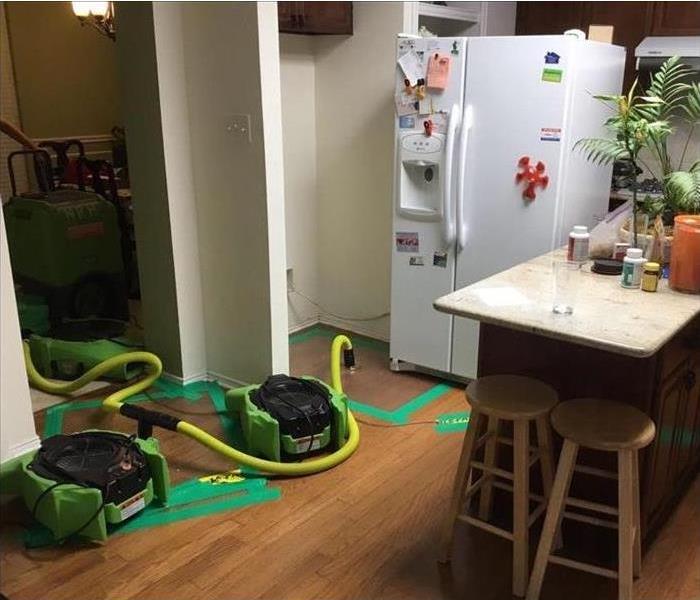What To Do After Your Toilet Overflows
8/16/2018 (Permalink)
Indoor plumbing is a wonderful amenity that most of the world has become accustomed to — and very grateful for — but that doesn’t mean it’s a flawless system. Sometimes you’ll find yourself dealing with a flooded toilet, which can be the result of a minor clog or even major sewer damage. No matter what problems you’re experiencing, it’s good to know what to do to minimize the potential damage to your home in North Richland Hills, TX after your toilet spills over.
A Simple Clogged Toilet
Most of the time, the issue is simply a small clog, and you’ll probably be able to take care of it with a plunger. If the toilet is currently overflowing, the first thing you’ll want to do is shut off the water supply using the valve that's usually found just behind the toilet. If you can’t find this, open the water tank and rig the float into a position that allows it to stay in place so no more water flows in.
Any water that made it to the floor is contaminated, especially if it’s from a bigger sewer backup. It’s very important to clean this up and disinfect the area, then disinfect any rags used for the cleanup.
Major Sewer Damage
If it seems like the toilet is still clogged or wants to keep overflowing, there’s a chance the clog is larger and deeper in the pipes. Alternately, there may be damage down below, such as a break or crack in the sewer system.
If you’re experiencing more serious sewer damage, the kind that can't be remedied with a plunger and elbow grease, it will more than likely become worse over time; it is definitely not a problem to put off. Contaminated water can back up not only into your toilets, but also into sinks, bath tubs, and showers, which can become a health hazard for you and your family. Contacting your local sewage system experts to diagnose and fix your sewer problems will give you peace of mind and prevent more costly damage from occurring in your home.





 24/7 Emergency Service
24/7 Emergency Service
